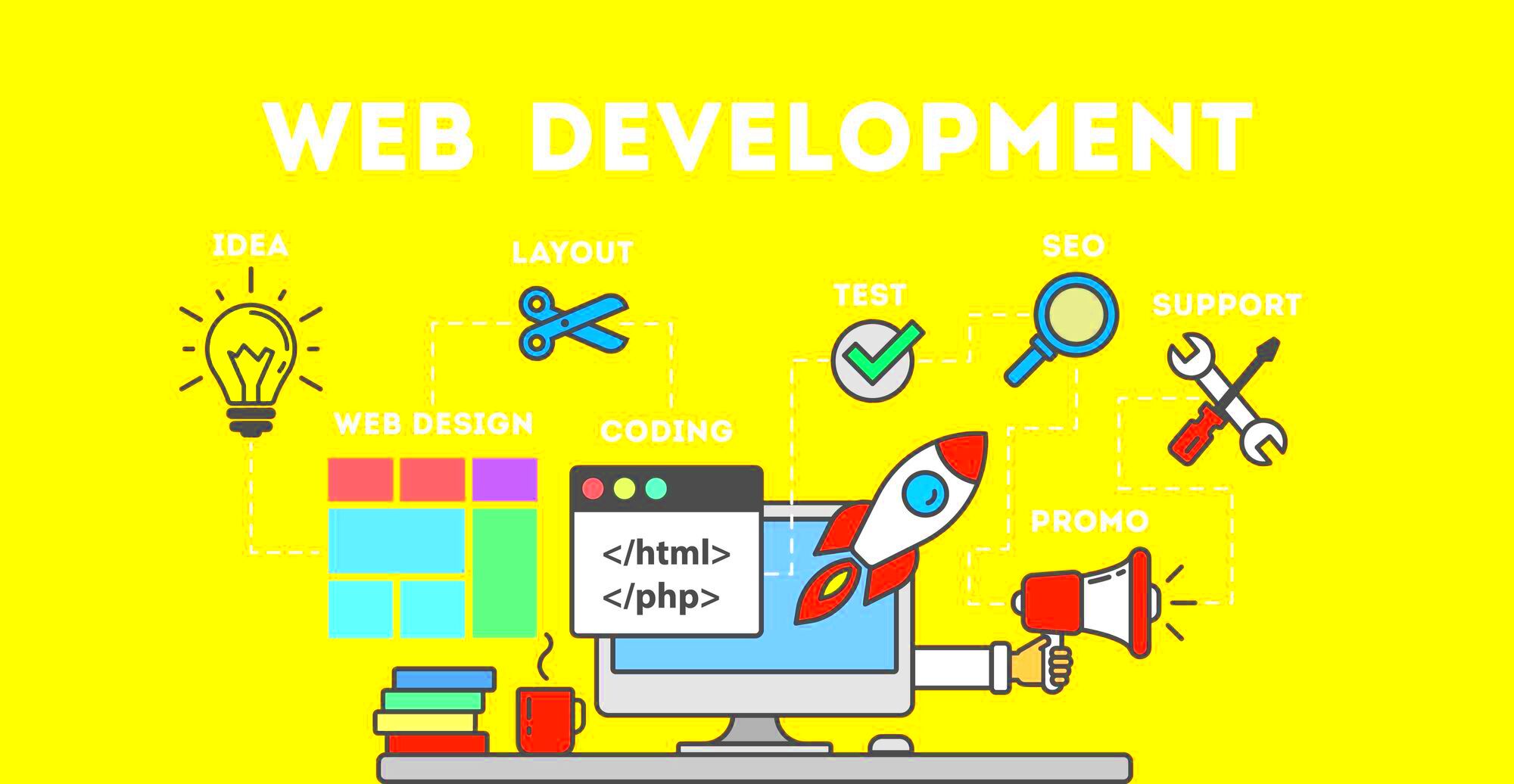Freelance web development is an exciting career choice for those who want to work independently while creating websites and applications. It allows you to work from anywhere, choose your own projects, and manage your own schedule. Whether you’re looking to start your career or transition from a full-time job, freelance web development can offer both flexibility and financial freedom. With a growing demand for online services, now is a great time to dive into this field.
Why Choose Freelance Web Development?

Freelance web development has many advantages, especially for those seeking flexibility and variety in their work. Here are some key reasons to consider this career path:
- Flexibility: As a freelancer, you set your own hours. You can work from home, a coffee shop, or even while traveling. It’s your decision!
- Control over Projects: Freelancers often get to pick the projects they work on, allowing you to focus on areas that interest you most.
- Potential Earnings: You can charge more for specialized services and decide your rates. Freelance web development can be very lucrative, especially with the right skills.
- Personal Growth: You’ll constantly learn new technologies and improve your skills, as the web development field evolves rapidly.
- Variety of Clients: Working with different clients keeps the work interesting, and you can build a diverse portfolio showcasing your expertise.
Choosing freelance web development allows you to pursue a career that matches your lifestyle, interests, and professional goals. It's a great way to work on your own terms.
Also Read This: How to Get More Impressions on Fiverr
Essential Skills for a Freelance Web Developer
To succeed as a freelance web developer, you need a combination of technical and soft skills. Here are the most important ones:
- HTML/CSS: These are the basic building blocks of web development. HTML structures the content, and CSS styles it.
- JavaScript: JavaScript is crucial for adding interactivity to websites. Mastering it helps you create dynamic, user-friendly pages.
- Responsive Design: Your websites must look great on any device, from desktops to smartphones. Knowledge of responsive design techniques is a must.
- Version Control (Git): Git allows you to track changes in your code, collaborate with others, and easily revert to previous versions if needed.
- Back-End Development: Understanding how server-side code works, such as working with databases and APIs, can make you a more versatile developer.
- Problem-Solving: Being able to troubleshoot issues and find solutions quickly is essential for meeting client expectations and deadlines.
- Communication Skills: As a freelancer, you will need to clearly explain your ideas, negotiate rates, and communicate effectively with clients.
- Time Management: Freelancers must manage their time well to juggle multiple projects, meet deadlines, and maintain a healthy work-life balance.
Having a strong foundation in these skills will help you stand out in the competitive world of freelance web development. Continuous learning and improvement are key to staying relevant and successful.
Also Read This: How to Become a Freelance Writer and Make Money
How to Get Started as a Freelance Web Developer
Starting out as a freelance web developer might feel overwhelming, but with a clear plan, you can break down the steps and make progress quickly. The first thing you need is a strong foundation in web development skills, but that’s just the beginning. Here’s how you can get started:
- Learn the Basics: Make sure you have a solid understanding of HTML, CSS, JavaScript, and other web technologies. You can find many free and paid resources online to help you get started.
- Build a Portfolio: Before you approach clients, you’ll need a portfolio showcasing your skills. You can build a personal website or contribute to open-source projects to gain experience.
- Start Networking: Connect with other web developers and potential clients on platforms like LinkedIn, Twitter, or even specialized developer forums. Attend local meetups or online events to build relationships.
- Find Your Niche: Specializing in a specific area, like e-commerce development or WordPress, can make you more attractive to clients looking for expertise in a particular field.
- Set Up a Business: Even as a freelancer, you’ll need to handle contracts, payments, and taxes. Look into setting up a business structure to make the process smoother.
- Start Small: Don’t be afraid to take on smaller projects at first. As you gain experience and confidence, you can gradually increase the complexity and value of the projects you take on.
By taking these steps and committing to continuous improvement, you’ll be well on your way to establishing a successful freelance web development career.
Also Read This: The Easiest Way to Craft the Best Gig Title for Fiverr Data Entry
Building Your Freelance Portfolio
Your portfolio is one of the most important tools for attracting clients as a freelance web developer. A strong portfolio demonstrates your skills and shows potential clients what you can do. Here’s how to build a portfolio that stands out:
- Include Personal Projects: If you’re just starting, build a few personal projects that showcase your web development skills. These projects don’t need to be huge, but they should be well-designed and functional.
- Work on Real Client Projects: If possible, offer to build websites for friends, family, or small businesses. This real-world experience is highly valuable and will add credibility to your portfolio.
- Showcase a Variety of Skills: Make sure to display a range of skills, from front-end design to back-end development. Clients like to see versatility.
- Include Testimonials: Positive feedback from clients can boost your credibility. Ask clients for testimonials after completing a project, and include them in your portfolio.
- Highlight Your Best Work: Quality matters more than quantity. Only showcase your best work and update your portfolio regularly as you complete new projects.
- Make It Easy to Navigate: Your portfolio website should be well-designed and easy to use. Include a simple contact form and links to your social media profiles or GitHub repositories.
Your portfolio is your online business card. It’s the first impression clients will have of you, so invest time in making it clear, professional, and reflective of your skills.
Also Read This: Top Ten High Paying Jobs on Fiverr
Setting Your Freelance Web Development Rates
One of the most challenging parts of being a freelance web developer is figuring out how much to charge. Setting the right rates ensures you’re compensated fairly for your work, while also staying competitive in the market. Here’s how you can set your freelance rates:
- Understand the Market: Research what other freelance web developers in your area or niche are charging. Rates can vary depending on experience, location, and project complexity.
- Consider Your Experience: If you’re just starting out, you might need to charge lower rates to build your portfolio. As you gain experience and develop your reputation, you can increase your rates.
- Hourly vs. Project-Based: Freelancers can charge either hourly or a flat project rate. Hourly rates are good for smaller, open-ended projects, while project-based rates work well for larger, defined tasks.
- Factor in Expenses: Remember that as a freelancer, you’re responsible for your own expenses, including taxes, software, and equipment. Make sure your rates cover these costs.
- Be Transparent: Always be clear about your rates with clients upfront. Provide a written contract outlining the costs, payment schedule, and deliverables to avoid misunderstandings later.
- Don’t Undervalue Yourself: It’s tempting to charge low rates to get more clients, but this can backfire in the long run. Charge what you’re worth and be confident in your skills.
Setting your rates is an ongoing process. As you gain more experience and a stronger client base, you can revisit and adjust your rates accordingly. Just remember, pricing too low can undervalue your skills, while pricing too high might scare away potential clients.
Also Read This: How to Get Gigs on Fiverr: Insights from Reddit
Finding Clients for Web Development Projects
One of the most crucial steps in becoming a successful freelance web developer is finding clients. Without clients, there is no business. The good news is that there are plenty of ways to find clients online and offline. Here’s how you can get started:
- Leverage Freelance Platforms: Websites like Fiverr, Upwork, and Freelancer are great places to find web development projects. Create a professional profile and start bidding on relevant jobs.
- Network with Others: Attend web development events, meetups, or conferences. These provide great opportunities to connect with potential clients and other developers who may refer you to clients.
- Use Social Media: Social platforms like LinkedIn and Twitter are useful for promoting your work and connecting with potential clients. Share your projects, blog posts, or industry insights to attract attention.
- Ask for Referrals: Once you’ve completed a project, ask satisfied clients for referrals. Word of mouth is one of the most powerful marketing tools.
- Cold Outreach: Reach out directly to businesses that may need a new website or web development services. Tailor your pitch to each business, showing how you can help them improve their online presence.
- Build Your Own Website: Having a professional website is a must. Not only does it showcase your portfolio, but it also serves as a marketing tool to help potential clients find you online.
Finding clients is a continuous process. The more effort you put into marketing yourself and building relationships, the more opportunities you’ll have to grow your freelance web development business.
Also Read This: How to Get Your Gig Seen on Fiverr
FAQ
Q1: How do I set my freelance rates?
Setting your freelance rates depends on your experience, the type of projects you take on, and the market demand. Research competitors in your field and consider the complexity of the work you’ll be doing. As a beginner, it’s okay to start with lower rates, but gradually increase them as you gain more experience and build a portfolio.
Q2: Do I need to specialize in one area of web development?
While it’s not necessary to specialize, having a niche can help you stand out in a crowded market. For example, if you specialize in WordPress development or e-commerce platforms like Shopify, you might attract clients looking for specific expertise.
Q3: How do I handle contracts and payments with clients?
Always use contracts to outline the scope of work, timelines, and payment terms. You can find contract templates online or work with a lawyer to create one. For payments, consider using platforms like PayPal or bank transfers, and break the payment into milestones to ensure you’re paid on time.
Q4: How can I get reviews or testimonials from clients?
After completing a project, ask your clients for a review or testimonial. Be polite and explain that reviews help build trust and attract future clients. You can also offer to write the review for them, which makes the process easier.
Conclusion
Becoming a freelance web developer can be a rewarding career choice if you’re ready to put in the effort. By developing your skills, building a strong portfolio, setting competitive rates, and finding clients through various channels, you can establish a thriving freelance business. Remember that success in freelancing takes time and persistence, so be patient with yourself as you grow and adapt. Keep learning, stay focused on delivering value to your clients, and soon you’ll find yourself on the path to long-term success.




